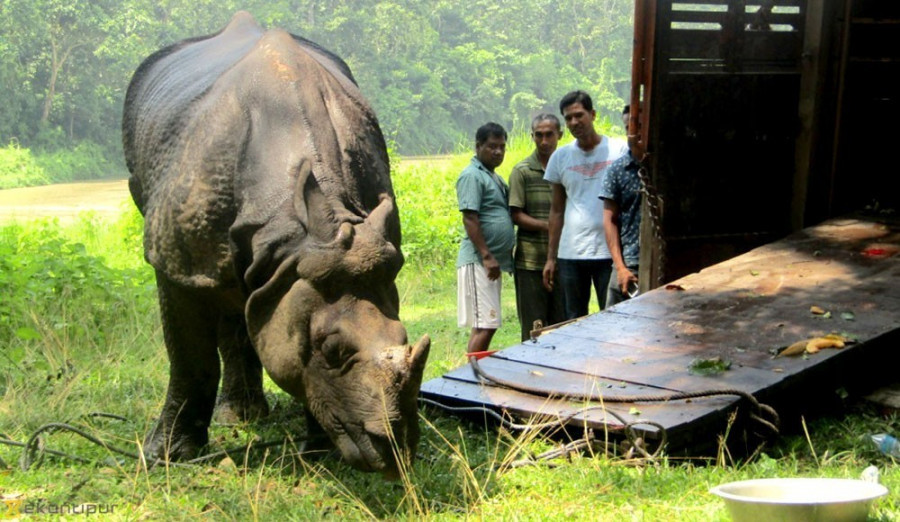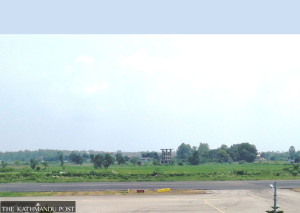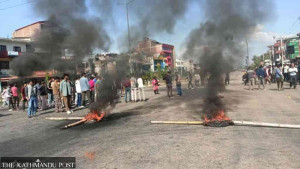National
After two postponements, pandemic pushes rhino count further
Counting of one-horned rhino, which was scheduled for March 2020, is likely to take place only next year with Covid-19 concerns and a wait for perfect timing.
Chandan Kumar Mandal
Like much else the census of one-horned rhinos in Nepal’s protected areas has also been affected by the Covid-19 pandemic.
The counting of the endangered species was initially planned for the last fiscal year but did not go as scheduled and it could be months before it begins.
The rhino count, which was to start on March 23, had to be called off for an indefinite period after the government had barred gatherings with more than 25 people in one place as part of measures to contain the spread of coronavirus in the country. The country then went under a four-month lockdown from March 24.
Now the Department of National Park and Wildlife Conservation—the government authority responsible for the management of parks and other conservation activities—has rescheduled the headcount of one-horned rhinos once again for this fiscal year.
According to Haribhadra Acharya, spokesperson for the department, rhino census has been enlisted in the annual programmes of the department.
“The rhino count is one of the priority activities of the department this fiscal year. However, since there are still Covid-19 concerns and we do not know when it will be over, we can not set a particular date for it to begin,” Acharya told the Post. “Also, the current time is not ideal for the rhino count.”
Postponement of rhino count was seen as one of the major impacts of Covid-19 pandemic on Nepal’s conservation sector, putting a halt to ongoing conservation activities.
The department has allocated Rs8 million for the counting of rhinos, dwelling in Chitwan National Park, Parsa National Park, Bardiya National Park and Shuklaphanta National Park.
According to Acharya, February to April is the perfect time for conducting rhino count in Nepal’s protected areas.
“These months are considered the best time for rhino counting because grasslands are clear with short grass offering better visibility for sighting rhinos,” said Acharya. “Therefore, we have to wait until March to begin the count. The department is all prepared with the required logistics and resources.”
For enumerating rhinos in protected areas and adjoining forests, park officials, technical experts, representatives of partner organisations and Nepal Army personnel, as well as 40 elephants are mobilised. A counter mounted on the elephant performs the headcount of rhinos traversing across the park.
Each rhino is located and counted by well-trained officials, technicians and wildlife biologists. The team traverses parallel across their habitats, counting all the sighted rhinos individually and recording details in a specified format. These details include shape, horn sizes, folds present in the neck and rump, unique body markings like cuts, scars, skin lobes and any other special characteristics present on both sides of their body.
“Whenever a rhino is between two counters on two elephants, they communicate with each other through their walkie-talkie and confirm who counted that particular rhino so that duplication doesn’t happen,” said Acharya. “There is also little chance of a rhino being counted twice as counting of rhinos in a particular patch is completed within a day. Geographical barriers like jungle or river distinguish their habitats and block them from travelling farther.”
According to the last count, which took place in 2015, Nepal is home to 645 rhinos—605 in Chitwan, 29 in Bardiya National Park, eight in Shuklaphanta National Park, and three in Parsa National Park.
This is the second time the regular rhino census has been postponed. As per the existing rhino conservation action plan, rhino count can be done every four or five years.
In 2019, the rhino census had to be called off after the government could not manage the required funds. Then the rhino count was rescheduled for March 2020 when, for the first time, the government would have counted Nepal’s rhinos with its own budget without seeking any financial support, except technical assistance, from conservation partners.
The new census is also crucial because there has been an alarming surge in death of one-horned rhinos in Chitwan due to natural causes. In the fiscal year 2016-17, 25 rhinos were reported dead, including one killed by poachers. Twenty-six rhinos died in the fiscal year 2017-18, 43 in 2018-19, and 26 in 2019-20.
Recently, a rhino was killed after 1,249 days of zero poaching.
However, Acharya says delay by some months in counting would not make a big difference towards rhino conservation.
“With the census, the trend of population increase or decrease will be studied, and the required management intervention will be introduced,” said Acharya. “Few months of delay will not affect rhino populations as they are living in their own space while other conservation activities have continued.”




 11.12°C Kathmandu
11.12°C Kathmandu













%20(1).jpg&w=300&height=200)

